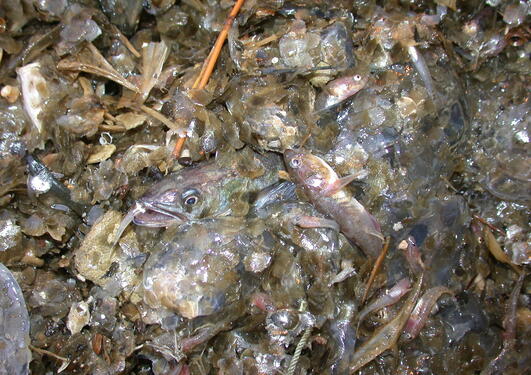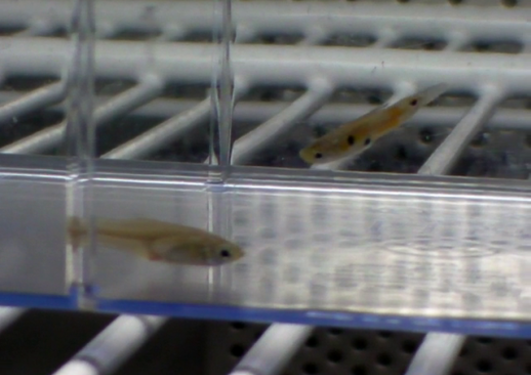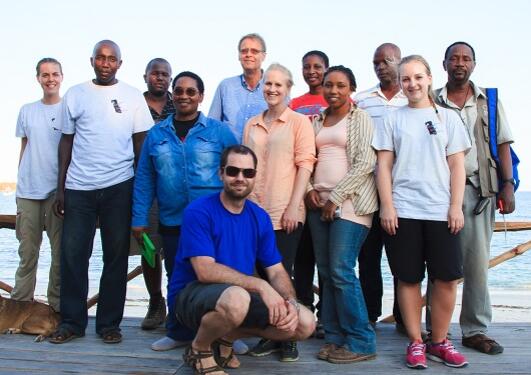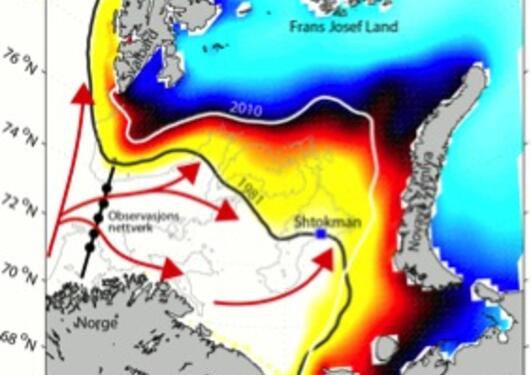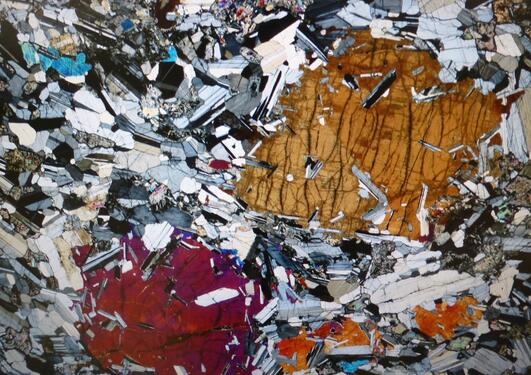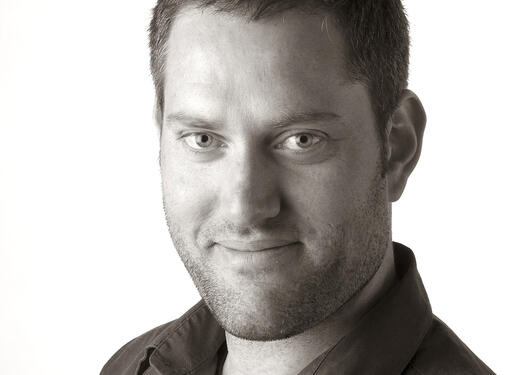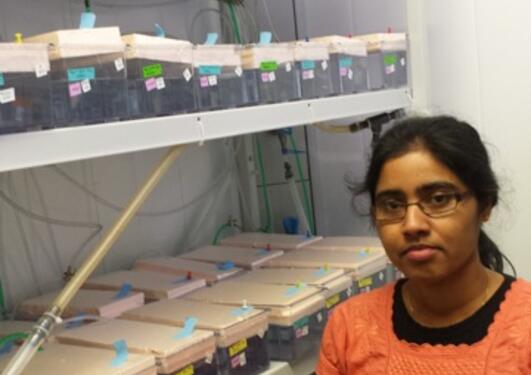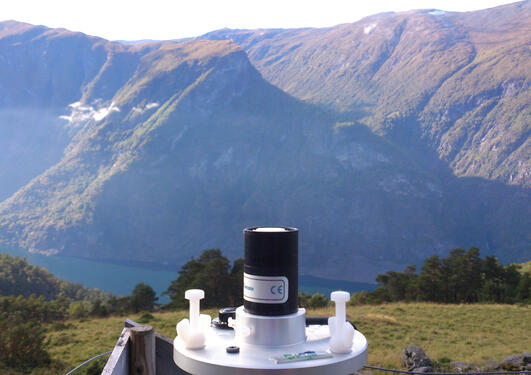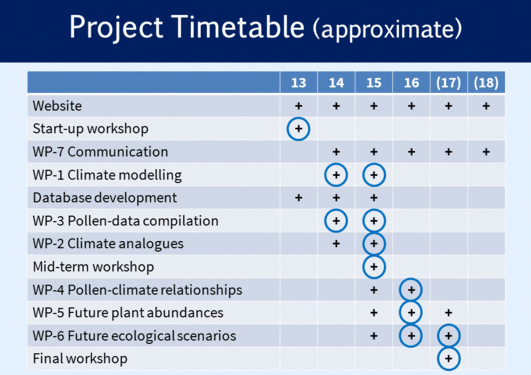News archive for Faculty of Mathematics and Natural Sciences
Spatial dynamics of the bearded goby and its key fish predators off Namibia varies with climate and oxygen availability
This year's winter school will be held during March 19 - 21 in Finse.
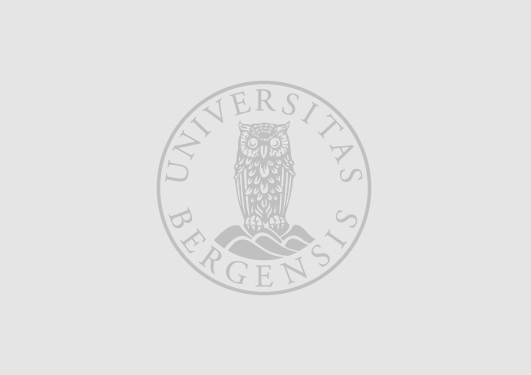
Four researchers from the Algorithms group are co-authors of a paper recently accepted to STOC 2014.
Joan Sala is a biology bachelor student from the University of Barcelona (UB). During the fourth year of his bachelor he has to carry out a thesis, so he decided to come to Bergen and join the EvoFish group!
University of Oslo is assisting students and scientists in Tanzania to increase the level of knowledge within Geology.
Shaken, not stirred. A new paper is shaking the position of the Baranov catch equation as one of the cornerstones of fisheries science. Fortunately, this shaking turns out not be too serious.
A recent Bjerknes study shows that the Gulf Stream’s Arctic limb is constrained by its heat transfer from the south.
A team of international researchers publishes in Nature after a 2 month expedition last year to drill into ocean crust 4800m below the surface
What will happen to the Greenland Ice Sheet if the Arctic sea ice covers disappears?
Researcher Bjarte Hannisdal at the Centre for Geobiology recently received a prestigious Bergen Research Foundation Recruitment Grant for his project “Earth System Interactions and Information Transfer”
CGB scientists Cedric Hamelin and Kristian Haaga are aboard the French IFREMER’s research vessel the Pourquoi pas?, investigating the detachment fault system at 13 degrees North on the Mid-Atlantic Ridge.
Over the last half-century, high performance computing has proved itself as essential a tool for the earth sciences as the weather balloon and the rock hammer.
BIO / UiB / Norway host a COST Action Management Committee meeting.
Geetha Jeyakanth is working in the guppy lab for her Master’s project on the effect of ambient oxygen on life history of guppies.
The amount of UV light reaching the Earth’s surface is thought to have varied in the past, and may be a largely overlooked factor in evolution. How can we quantify changes in UV over time to test these ideas?
The NoAClim project not only aims to test the scenario of novel, no-analogue climates and ecosystems in Norden, but it also aims to bridge the gap between climate and biodiversity research.

Around the world, and particularly in Europe, governments are beginning to discuss how best to undertake a transformation from energy-driven to bio-driven economies.
Pages
- September 2024 (9)
- August 2024 (9)
- July 2024 (11)
- June 2024 (7)
- May 2024 (14)
- April 2024 (16)
- March 2024 (6)
- February 2024 (15)
- January 2024 (7)
- December 2023 (7)
- November 2023 (19)
- October 2023 (11)
- September 2023 (12)
- August 2023 (8)
- July 2023 (3)
- June 2023 (11)
- May 2023 (7)
- April 2023 (13)
- March 2023 (9)
- February 2023 (11)
- January 2023 (18)
- December 2022 (5)
- November 2022 (25)
- October 2022 (8)
- September 2022 (8)
- August 2022 (8)
- July 2022 (5)
- June 2022 (9)
- May 2022 (7)
- April 2022 (6)
- March 2022 (7)
- February 2022 (10)
- January 2022 (7)
- December 2021 (10)
- November 2021 (3)
- October 2021 (10)
- September 2021 (6)
- August 2021 (6)
- July 2021 (3)
- June 2021 (21)
- May 2021 (13)
- April 2021 (3)
- March 2021 (6)
- February 2021 (4)
- January 2021 (4)
- December 2020 (6)
- November 2020 (2)
- October 2020 (4)
- September 2020 (4)
- August 2020 (4)
- July 2020 (2)
- June 2020 (3)
- May 2020 (4)
- April 2020 (5)
- March 2020 (1)
- February 2020 (2)
- January 2020 (3)
- December 2019 (7)
- November 2019 (4)
- October 2019 (9)
- September 2019 (4)
- August 2019 (3)
- July 2019 (3)
- June 2019 (9)
- May 2019 (8)
- April 2019 (7)
- March 2019 (8)
- February 2019 (10)
- January 2019 (12)
- December 2018 (14)
- November 2018 (9)
- October 2018 (11)
- September 2018 (5)
- August 2018 (8)
- July 2018 (2)
- June 2018 (6)
- May 2018 (9)
- April 2018 (8)
- March 2018 (8)
- February 2018 (8)
- January 2018 (6)
- December 2017 (3)
- November 2017 (8)
- October 2017 (7)
- September 2017 (4)
- August 2017 (4)
- July 2017 (3)
- June 2017 (13)
- May 2017 (6)
- April 2017 (5)
- March 2017 (9)
- February 2017 (8)
- January 2017 (5)
- December 2016 (6)
- November 2016 (5)
- October 2016 (7)
- September 2016 (8)
- August 2016 (3)
- June 2016 (6)
- May 2016 (8)
- April 2016 (4)
- March 2016 (5)
- February 2016 (5)
- January 2016 (6)
- December 2015 (6)
- November 2015 (4)
- October 2015 (2)
- September 2015 (2)
- August 2015 (2)
- July 2015 (3)
- June 2015 (3)
- May 2015 (3)
- April 2015 (2)
- March 2015 (3)
- February 2015 (3)
- January 2015 (5)
- December 2014 (3)
- November 2014 (2)
- October 2014 (7)
- September 2014 (6)
- August 2014 (1)
- July 2014 (1)
- June 2014 (1)
- May 2014 (7)
- March 2014 (6)
- February 2014 (4)
- January 2014 (3)
- December 2013 (6)
- November 2013 (8)
- October 2013 (15)
- September 2013 (9)
- August 2013 (8)
- July 2013 (5)
- June 2013 (7)
- May 2013 (10)
- April 2013 (9)
- March 2013 (4)
- February 2013 (5)
- January 2013 (6)
- December 2012 (4)
- November 2012 (5)
- October 2012 (5)
- September 2012 (7)
- August 2012 (6)
- July 2012 (2)
- June 2012 (8)
- May 2012 (4)
- April 2012 (2)
- March 2012 (5)
- February 2012 (6)
- January 2012 (6)
- December 2011 (4)
- November 2011 (9)
- October 2011 (7)
- September 2011 (11)
- August 2011 (4)
- July 2011 (5)
- June 2011 (8)
- May 2011 (8)
- April 2011 (6)
- March 2011 (9)
- February 2011 (9)
- January 2011 (7)
- December 2010 (3)
- November 2010 (5)
- October 2010 (5)
- September 2010 (7)
- August 2010 (2)
- June 2010 (7)
- May 2010 (5)
- April 2010 (4)
- March 2010 (6)
- February 2010 (8)
- January 2010 (10)
- December 2009 (1)
- October 2009 (7)
- September 2009 (7)
- August 2009 (6)
- July 2009 (2)
- June 2009 (7)
- May 2009 (7)
- April 2009 (2)
- March 2009 (4)
- February 2009 (3)
- January 2009 (10)
